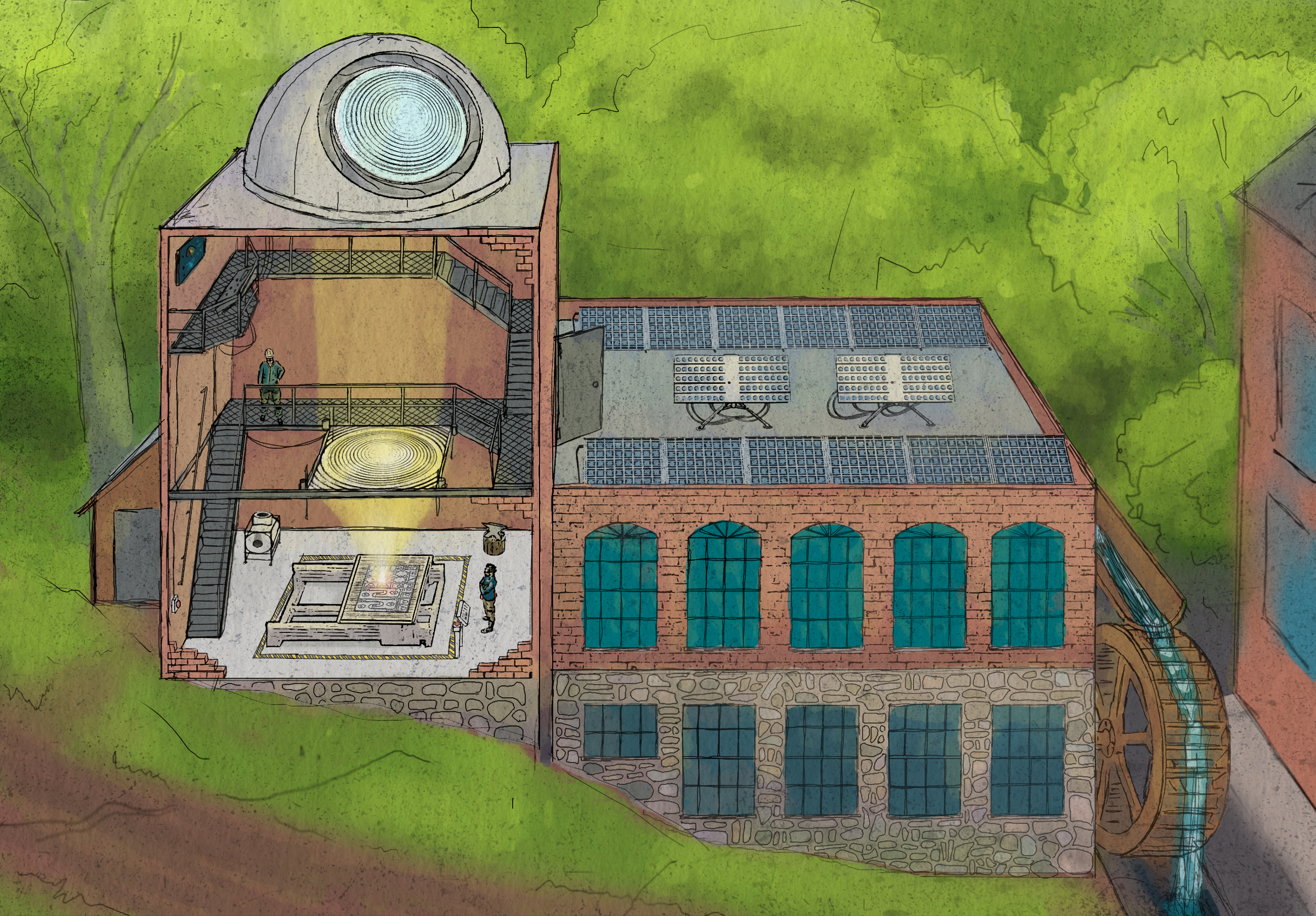This is one I’ve had on my list for months now, and I finally decided to just go ahead and make it. Back when I was researching solar cookers, solar concentrator, and solar furnaces, I ran into a few really interesting ideas around fresnel lenses. Look them up on youtube and you can find all kinds videos of people melting glass or burning skillsaw blades in half, but the ones that kind of showed me how useful a really-concentrated point of heat could be was this 3D printer for sintering sand into glass objects and this solar rig for smelting zinc or aluminum. Both used fresnel lenses, but were limited by the size of their portable builds.
So here’s my take on something bigger and more permanent, though hopefully still flexible enough to do multiple jobs using concentrated sunlight. The building’s tower houses an observatory-style dome with an irising shutter around a very large fresnel lens. This lens is meant to gather light, but deliberately doesn’t focus it too much, just directs it to another lens, which aims the light straight down. There, on a motorized rig which allows for some adjustment up and down, is the third lens which actually brings it to a searing focal point.
With that focal point reliable and known, the people at the workshop could move several different tools underneath it as necessary, from a crucible for smelting, to a firepot for solar forging, perhaps a glassblowing oven, a 3D sinterer, or the large CNC plasma cutter-style rig shown in the scene.
A set of computers would be set up with light sensors and control over the rotation of the dome, to allow it to track the sun, and the width of the aperture in the shutters, to allow it to regulate the amount of light. The upper limit on the light would be based on how bright the day is, but if they need anything less than full sun, then the opening and closing of the shutters should help with providing consistency. If it starts around half open in full sun and a cloud moves in front of the dome, it might open all the way, then close partially as the cloud leaves. With many minute adjustments, the overall amount of light could remain very consistent down on the ground.
As for the level of focus, I suspect the kerf while cutting would almost definitely be wider than with a modern plasma cutter, but like I said before, people have cut through skillsaw blades with just a lens from a rear-projection TV. So it's possible a larger lens could concentrate even more heat, allowing it to burn through much faster, with less damage to the surrounding material. The tightness of the point would mostly come down to the quality of the lens, as far as I know.
I’ve tried to include a number of controls, caution markings, and red emergency stop buttons, but the one thing I really don’t like about the design as drawn is that it’s not obviously fail-safe. I think ideally there’d be some kind of hanging weight or other mechanism so that when power is lost (not just to the building, as that probably happens fairly often on a less-reliable grid, but to the system’s control unit) the shutters or another light-blocking mechanism slams into place.
Other notes about the scene, I’ve tried to include a diversity of ways to use the sun, the photovoltaic panels for powering the electronics and perhaps some of the tools, a set of fiberoptic solar daylighting systems, which track the sun and pipe light down to the shop floor, along with the simplest version, large windows. This emphasis on daylight should help avoid the risk of electric lights strobing in sync with moving items (such as on a lathe or milling machine) which can cause them to appear stationary and safe to grab onto, though they likely have two sources of light on each just in case. I’ve also included a water wheel, either for power generation, or for the direct motion, to be connected to certain tools or machinery via axles and belts.

Oh ok then!